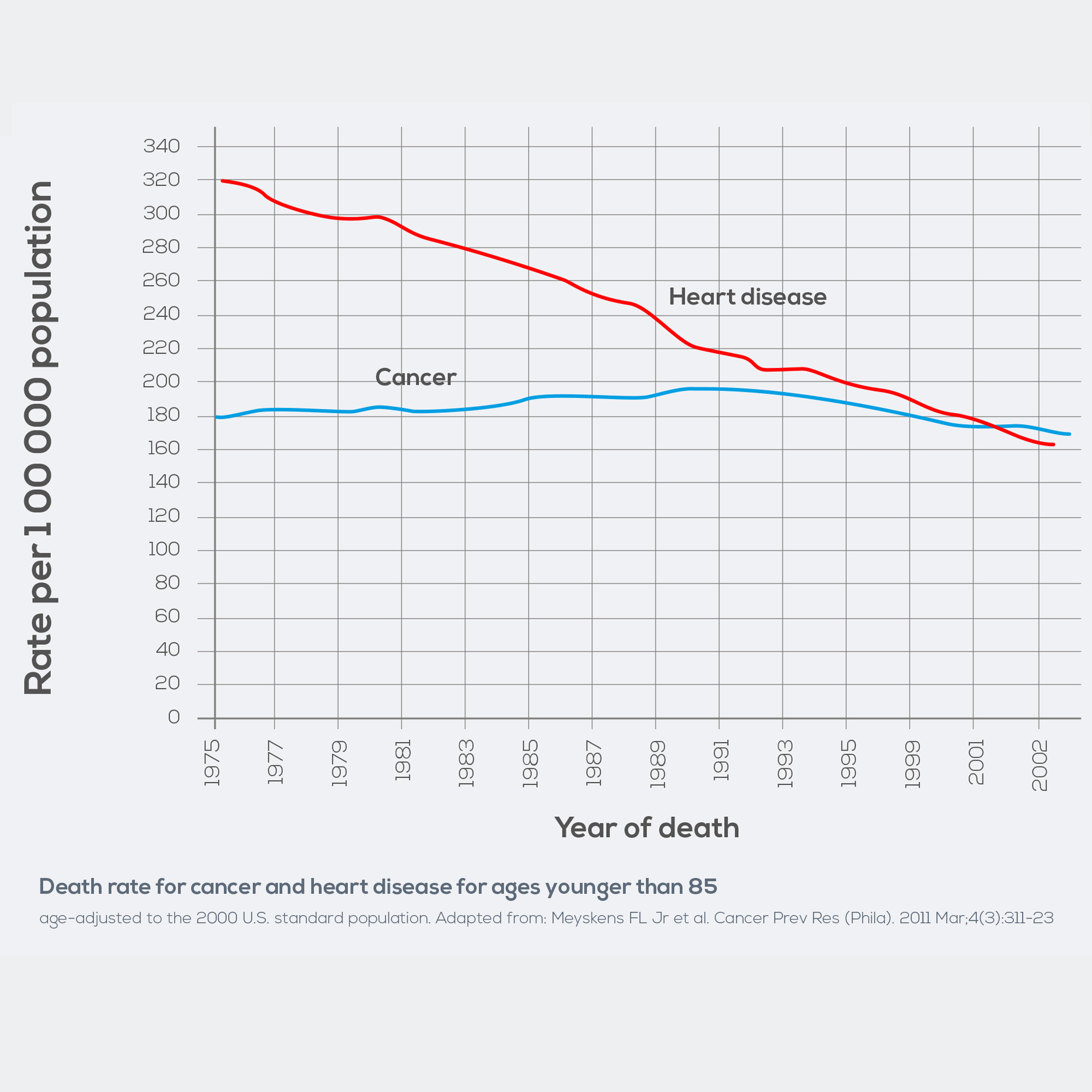The disease is a leading cause of death. In 2020, it was responsible for nearly 10 million deaths worldwide. Lung, colorectal, liver, stomach, and breast cancer accounted for half of these losses, and, unfortunately, new diagnosis were common. The new cases were 2.26 million for breast cancer, 2.21 million for lung cancer, 1.93 million for colorectal cancer, 1.41 million for prostate cancer, 1.20 million for skin cancer (non-melanoma), and 1.09 million for stomach cancer. In the last 40 years, while preventive risk reduction was contributing to the steady fall of heart disease death rates, cancer became the leading cause of death in many US states. In 1999, age-standardized heart disease mortality still was higher than that for cancer in all states, but in 2016 the situation was the opposite in 19 states.

Age is among the most important cancer risk factors, and the world population is aging, reaching cancer-prone ages. Moreover, treatment improvement increased cancer patients’ lifespan, but survivors’ cancer risk is higher. This increasing cancer burden can only be tempered by an approach in which efforts in disease treatment are paralleled by an increase in its interception. This second way is more cost-effective, counts least human costs, and will further reduce cancer burden on public health and wellbeing.
To date, cancer prevention consists of interventions aimed at reducing generic external risk factors (such as smoke, alcohol, unhealthy diet, and radiation), and of early detection. This approach is often perceived as a passive method requiring deprivation (of smoke, of alcohol, of some foods, and so on), and early detection can prevent cancer death but not cancer onset. What is more, people are more and more seeking encouraging health information that could address cancer worry. That means that preventing cancer death (that is, the target of early detection) is not always the principal focus of people, who sometimes simply feel spontaneously compelled to take action rather than inaction against this disease.

